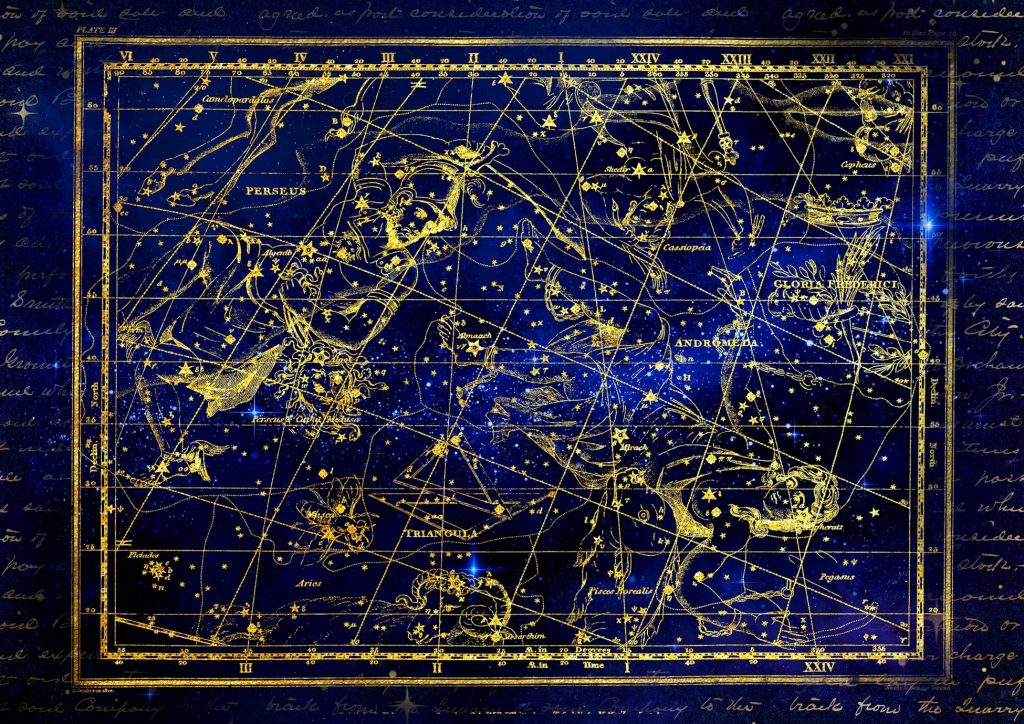Secrets of distant planets and star constellations
A planet differs from a star in that it is not a field for fusion (mass and natural) reactions because the planets do not have enough mass for this purpose. At thirteen Jupiter masses, the planet turns into a star. Both those as well as other objects rotate around their axis. In this case, the planet also rotates relative to its star. However, nowadays this fact is being questioned by scientists because objects that are very similar to planets that do not revolve around stars have been observed.
We can observe the stars and zodiac signs constellations. They are best visible at night, because then the Sun does not shine on them and they are perfectly visible. Most stars are found in the southern hemisphere.
A star is a body in space where thermonuclear reactions take place. These are huge bright and shiny balls. As a result of gravitational compression, they are formed from the environment of gas and dust. The temperature inside the stars is very high, measured in millions of Kelvin (Kelvin is a measure of the temperature of the stars). Very often scientists call the stars the main bodies that can be found in space. This is explained by the fact that those in nature contain most of the luminous matter.
Planets are bodies in space of solid consistency, resembling spheres in their shape, i.e. they have a round or slightly oval shape. A characteristic feature of the planets is that they are constantly in motion, “flying” around the stars that are next to them. An example of this, our planet Earth moves around the Sun, i.e. flies around it in one year. During the movement of the Earth, it approaches the Sun and then removes itself slightly. Therefore, in one completed turn on the planet, the seasons change. The earth moves, like other planets along a certain route, which has a name such as orbit. If there are objects in orbit other than planets, they are called asteroids.
The brightest star in the sky is Sirius, located in the constellation Big Dog.
The star’s surface is not solid because the star is a mixture of gases and dust. As we know, the planets in this respect are not so homogeneous: gas planets are known, as well as planets with a solid surface, such as our Earth. Planets have a magnetosphere or “magnetic atmosphere” created by the planet’s own magnetic moment. A weak magnetic field cannot sustain a planet’s atmosphere, although such cases are rare. The stars have no atmosphere. And the chemical composition of stars is dominated by “light elements” – with a low atomic number (for example, carbon, helium).
Nuclear reactions in stars do not take place throughout their entire volume, but only in certain central locations, in the nuclei. The energy that arises from these reactions is radiated out gradually, sometimes over the course of millions of years. Stars are formed from interstellar material that under certain conditions can condense under the influence of gravity.
There are several differences between a star and a planet, and they are fundamental.
A star is a spherical body, points of light in the sky, consisting mostly of plasma, which emits visible light (that is, light that we see, to which our eye’s retina reacts), i.e. it shines with its own light. I wrote about the formation of stars early on, so I won’t write more about it here, but the main components of a star are hydrogen and helium. What is worth mentioning is that the Sun is also a star, the most visible star to us, and we only see it during the day.
A planet, on the other hand, is an object that orbits a star and that shines with reflected light rather than its own light. They are composed mostly of rock or gas and are in orbit around the sun.
The difference between planets and stars:
- The star is very bright and we can see it from anywhere in the world. The planets only reflect the light received. From the outside, the planets represent dark celestial objects and without the brightness of a nearby star it would be impossible to see the planet.
- The stars have a great positive temperature, which the planets cannot boast of. The temperature at the top of each star can reach up to 40,000 degrees, and in the central part it can reach millions of degrees. In modern science they have not made such a device by which such high temperatures could be measured.
- The weight of the stars far exceeds the weight of the planets. The stars have massive dimensions, and the planets are just crumbs.
- The stars are always motionless, which cannot be said of the planets. They move around the axis of the stars. Example of this: The earth moves around the sun, which is stationary in relation to it.
- The composition of the planets are solid and light elements that contain gas. The stars are filled with light matter.
- All planets have one or more satellites at once (for example: The Moon is a satellite of the Earth). The stars do not have such luxury as their satellite. But there are some nuances – the missing satellite is not the fact that it is not a planet. This requires a long study.
- Nuclear stars are sure to appear on all stars. There are no such features on the planets.
You can buy a star cosmonova.org, but not a planet. So planets differ from stars in many ways, but much has not been learned.




